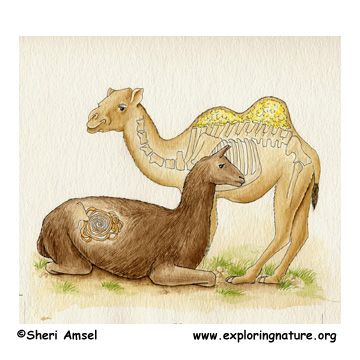

This myth is supported by the fact that after a long, dry journey, a camel's hump may hang over on its side, emptied of its contents. In truth, a camel's hump is all fat, which gets burned up on a long journey. The fat does actually hold a lot of water and is broken down and used by the body. Camels also have a very long intestine that squeezes every drop of water from the food they eat. When a camel finally reaches water, it can drink up to 50 gallons in a very short time. All members of the camel family, including llamas have water saving adaptations for their arid environments.
